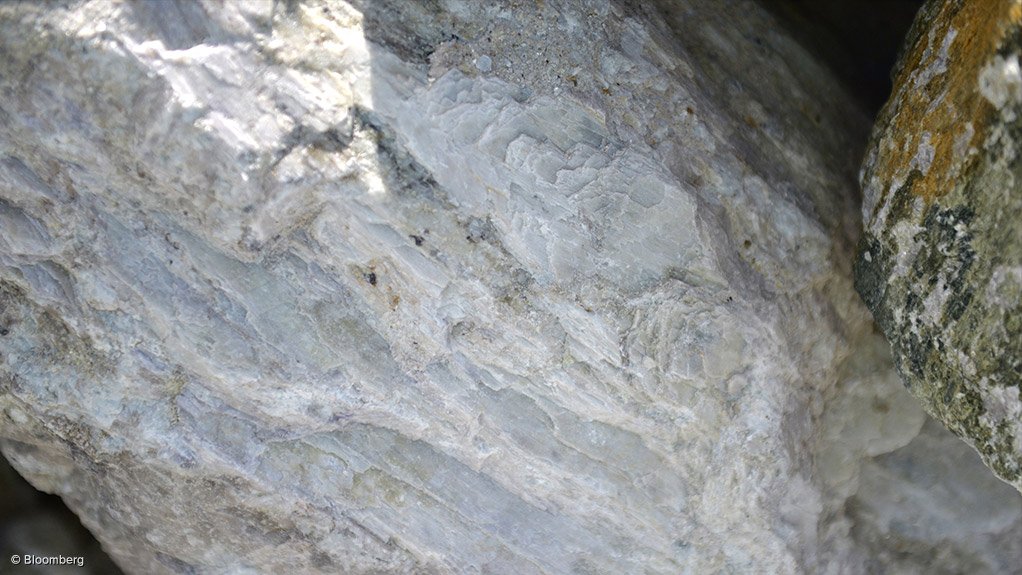Research identifies ways to reduce lithium in lithium batteries
PERTH (miningweekly.com) - Researchers at Monash University have developed a new lithium-sulphur (Li-S) battery design that reduces the amount of lithium required in a single battery.
A recent paper by PhD student Declan McNamara, Professor Matthew Hill, and Professor Mainak Majumder of Monash Engineering, with Dr Makhdokht Shaibani of RMIT University, outlines how applying a nanoporous polymer directly onto the lithium foil anode has created a new battery design that uses less lithium, has more energy per unit volume, lasts longer and will be half the price of lithium-ion batteries.
Li-S batteries are an emerging energy storage technology that uses metallic lithium and sulphur to deliver more energy per gram than lithium-ion batteries. While the Li-S batteries are highly efficient, the process of finding, extracting and transporting lithium leaves a significant environmental footprint, so using as little lithium as possible remains important.
Li-S batteries also have their limitations. Typically they contain a lithium anode (negative electrode) and sulphur cathode (positive electrode) with a separating layer. When the battery charges and discharges, large amounts of lithium and sulphur are reacted with one another, placing the lithium metal under a lot of strain.
McNamara said the thin polymer coating on lithium significantly improved the number of times the battery could be cycled.
“The polymer contains tiny holes less than a nanometre in size – one billionth of a metre – which allow lithium ions to move freely while blocking other chemicals that would attack the lithium. The coating also acts as a scaffold for lithium, and helps it charge and discharge repeatedly.
“Metallic lithium is a bit of a double-edged sword. Lithium is packed full of energy, but in a bad battery, this energy is wasted on side reactions. On the other hand, if the energy is channelled correctly, it can make some incredible energy storage devices that are easier to make. This coating is a step towards highly efficient, easily manufactured Li-S batteries,” McNamara said.
The new design does not require nickel or cobalt, removing the need for minerals that have a significant environmental and social cost.
Majumder said these developments were promising steps towards more widespread adoption of Li-S batteries and other lithium metal-based energy storage systems.
“Li-metal protection technologies will become crucial in our quest towards energy dense and sustainable batteries of the future. The study establishes a new framework to protect Li-metal from rapid decay or catastrophic failure which has been an Achilles heel for Li-S batteries,” he said.
Professor Hill said the technology could make an immediate impact.
"The market for electric vehicles, drones and electronic devices is on a steep growth pattern and this research is commercially ready for manufacturing to support that growth. Producing more economical and environmentally sensitive battery options in Australia would be a great use of this technology, and we look forward to working with commercial partners to develop and manufacture this technology," he said.
Comments
Press Office
Announcements
What's On
Subscribe to improve your user experience...
Option 1 (equivalent of R125 a month):
Receive a weekly copy of Creamer Media's Engineering News & Mining Weekly magazine
(print copy for those in South Africa and e-magazine for those outside of South Africa)
Receive daily email newsletters
Access to full search results
Access archive of magazine back copies
Access to Projects in Progress
Access to ONE Research Report of your choice in PDF format
Option 2 (equivalent of R375 a month):
All benefits from Option 1
PLUS
Access to Creamer Media's Research Channel Africa for ALL Research Reports, in PDF format, on various industrial and mining sectors
including Electricity; Water; Energy Transition; Hydrogen; Roads, Rail and Ports; Coal; Gold; Platinum; Battery Metals; etc.
Already a subscriber?
Forgotten your password?
Receive weekly copy of Creamer Media's Engineering News & Mining Weekly magazine (print copy for those in South Africa and e-magazine for those outside of South Africa)
➕
Recieve daily email newsletters
➕
Access to full search results
➕
Access archive of magazine back copies
➕
Access to Projects in Progress
➕
Access to ONE Research Report of your choice in PDF format
RESEARCH CHANNEL AFRICA
R4500 (equivalent of R375 a month)
SUBSCRIBEAll benefits from Option 1
➕
Access to Creamer Media's Research Channel Africa for ALL Research Reports on various industrial and mining sectors, in PDF format, including on:
Electricity
➕
Water
➕
Energy Transition
➕
Hydrogen
➕
Roads, Rail and Ports
➕
Coal
➕
Gold
➕
Platinum
➕
Battery Metals
➕
etc.
Receive all benefits from Option 1 or Option 2 delivered to numerous people at your company
➕
Multiple User names and Passwords for simultaneous log-ins
➕
Intranet integration access to all in your organisation





















